.30-06 vs .308 Win: Thirty Cal Throwdown w/ Ballistic Graphs
The .30-06 Springfield and .308 Winchester are two of the most popular hunting cartridges in America. Both have similar backstories. But is one better than the other?
.30-06 vs .308 Win Spec Comparison

.30-06 Springfield 7.62x63mm
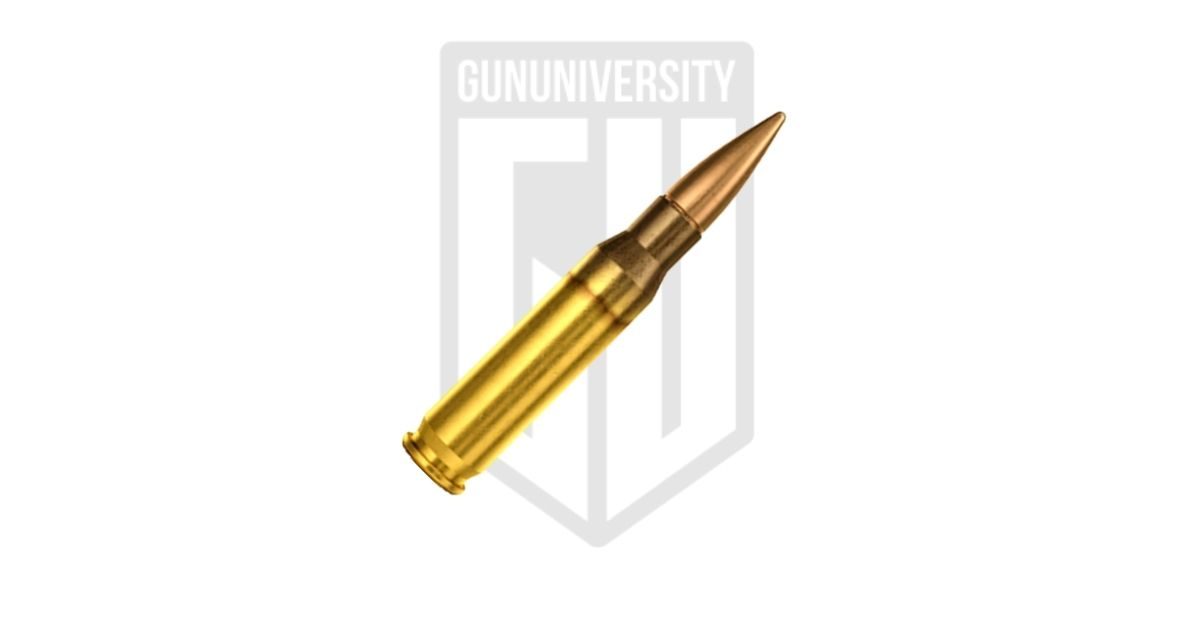
.308 Winchester 7.62x51mm NATO
Why Compare .30-06 vs .308?
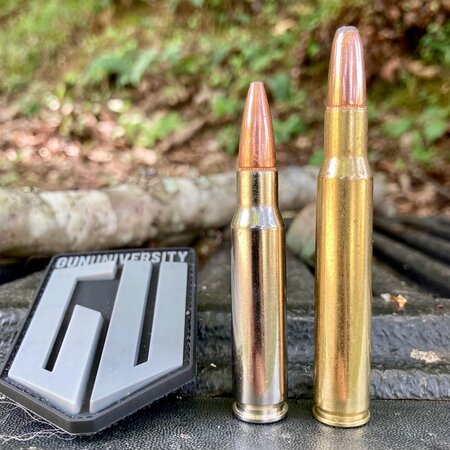
There are a few rounds out there that share a strikingly similar journey, and the .308 and the .30-06 are one of those duos. Their origins are both tied to military service, and they’ve both been the king of the mountain in the world of hunting and shooting, just in different decades. If you ever hear someone call the .308 a “shortened .30-06,” they’re not exactly wrong, but they’re not exactly right either. It’s like calling a Honda Civic a “shortened Accord.” You get the idea, but it’s missing some nuance.
In this article, we’re going to pull back the curtain on these two iconic cartridges. We’ll dive into their history, break down the physical and ballistic differences, and even get into some of the less measurable, yet still important, distinctions. At the end of the day, is one really better than the other, and if so, how do you know which one to pick?
It’s cartridge vs. cartridge: 30-06 vs 308.
.30-06 Springfield Review
Below we’re going to dive into the .30-06 Springfield 7.62x63mm review. We’re going to look at its history and purpose and the best ammo for the .30-06.
History & Purpose
The .30-06 Springfield was born from military necessity, largely as a fix for the headaches caused by its slightly older brother, the .30-03. Adopted in 1906 (because the military is nothing if not creative with names), this round became the new standard, replacing a bunch of old-school cartridges like the .30-40 Krag.
This bad boy served for decades, most famously in the hands of GIs wielding the 1903 Springfield and what General Patton himself called “the finest battle implement ever devised,” the M1 Garand. Heck, even after the M1 was put out to pasture, the .30-06 stuck around to feed machine guns all the way into the Vietnam era.
But it wasn’t just a military workhorse. The .30-06 found a second home in the hearts of hunters and quickly became one of the most popular deer cartridges in the country, duking it out for supremacy with the .30-30 Winchester for most of the 20th century. Today, if you read the latest gun magazines, you might think the .30-06 is about as relevant as a flip phone.
Don’t be fooled.
There are countless thousands of these rifles still in the wild, from beat-up old 1903s to gorgeous heirloom Remington 700s to brand-spanking-new plastic-stocked Ruger Americans. And because there are so many, just about every ammo manufacturer on the planet still produces rounds for them. The .30-06 is also a proud parent, giving us some other fantastic cartridges like the slick little .25-06, the enormously popular .270 Winchester, and one of my personal favorites, the little-known .35 Whelen.
Best Ammo for the .30-06
Rifle cartridges in general aren’t the cheapest ammunition available. And that’s why it’s imperative that you divide your ammo into two distinct groups: hunting and practice. Your practice ammo is going to be much cheaper and isn’t going to eat as big a hole in your wallet when burning through shots at the range.
Hunting Ammo
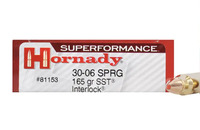
Hornady Superformance 165-grain SST
Marketplace |
Cost Per Round |
| MidwayUSA | $1.65 |
| Brownells | $1.65 |
| Palmetto State Armory | $1.80 |
.308 Winchester Review
Now let’s look at the .308 Winchester 7.62x51mm NATO cartridge. Below we are going to dive into the history and purpose and the best ammo for the .308.
History & Purpose:
As I mentioned earlier, the .308 Winchester followed a very similar path as the longer (and longer-in-the-tooth) .30-06. While some folks just call it a “shortened .30-06,” that’s like calling a sports car a “fast sedan.” It’s technically true, but it totally misses the point. Thanks to a few decades of gunpowder science, the .308 crammed virtually the same power into a more efficient, compact package.
The .308—or more technically the 7.62x51mm NATO—has been an absolute rockstar on the battlefield. It’s powered just about everything from the classic M14 to the modern FN SCAR, from M40 sniper rifles to Mk48 machine guns. The .308 is basically the Forrest Gump of military calibers; it was everywhere.
The civilian .308 Winchester, introduced in 1952, has been a runaway success ever since. This round is an extremely capable hunter, and you can responsibly take just about any game animal in North America with it, shy of maybe a grizzly bear on a bad day. The long-range and sniping communities can’t quit this round either, and if you’ve got the skills, the lowly .308 will drop rounds on a target at 1,000 yards all day long. While some of the newer kids on the block, like the 6.5 Creedmoor, have stolen some of its thunder, the .308 is still an immensely popular choice for long-range work.
Here’s where the .308 really pulls ahead of the old man: platforms. The .308 has ventured into modern battle rifle platforms like the ever-popular AR-10, as well as outliers like Kel-Tec’s RFB and the civilian version of the FN SCAR. This gives it a ton of flexibility, making it much more viable for defensive roles than the old .30-06.
And like its ancestor before it, the .308 has spawned a whole family of its own. Its offspring include the popular .243 Winchester, the 7mm-08 Remington, and the criminally underrated .338 Federal, which is one of my personal favorites.
Best Ammo for the .308
Like the .30-06, this ammunition is not cheap. But if you purchase two sets of ammo like we recommend, you’ll keep your budget happy. Here are our recommendations for both hunting and practice ammunition in .308 Win.
Hunting Ammo

Nosler Ballistic Tip 165-Grain
Marketplace |
Cost Per Round |
| MidwayUSA | $1.65 |
| Brownells | $1.80 |
| Palmetto State Armory | $1.28 |
Practice Ammo
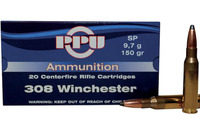
PRVI Partizan 150-Grain JSP
Marketplace |
Cost Per Round |
| MidwayUSA | $0.85 |
| Palmetto State Armory | $0.85 |
.30-06 vs .308 Ballistics Comparison
Quite obviously the .30-06 has a larger case capacity than the comparably stubby .308 Winchester. The difference is visible, and can be quantified by case capacity: 68 grains of H2O versus 56. How much does that difference contribute to a power differential between these two cartridges?
Because the pressure of the two cartridges is limited by SAAMI specifications, a lot of that extra space in the .30-06 is of little benefit.
Both operate with maximum pressures that are within 100 pounds per square inch (PSI) of each other: 61,900 for the .30-06 and 62,000 for the .308. That’s really, really close.
The .30-06’s extra capacity is of minor benefit here because it does manage to – all other things being equal – push bullets roughly 100 feet per second (FPS) faster than the .308 does.
When dealing the respective ranges of these cartridges, 100 FPS isn’t nothing. With both running nominally in the 2,500-2,700 FPS range, it’s also nothing special. So, while the .30-06 does have a slight ballistic edge it’s pretty thin.
The .30-06’s larger capacity is also beneficial in another, less obvious way. The .30-06 has room for longer and thus heavier bullets. The .30-06 tops out at 220-grain bullets, while 180 grains is pretty much the high end for the .308.
Though these longer, heavier bullets start out a bit slower, both have both a higher ballistic coefficient and retain more energy at distance. The difference between a 180-grain bullet from a .308 and a 220-grainer from a .30-06 is still pretty small…but it is there.
Let’s look at some charts of bullet comparisons between these two 30 caliber cartridges.
Here’s the warning: caliber comparisons are ripe for frustrating readers (as can usaully be seen in the comments). It seems that no matter which loads we choose to cmpare, someone is unhappy. If we choose the heaviest bullet, someone will complain that we didn’t use the same bullet in each. Of course, there are pros and cons to each.
The same bullet seems to be a more equal comparison, however, the heaviest bullet can show the difference of the true capabilities. So, in an effort to paint the best picture (and save the bickering) we’ll try both.
308 vs 30-06 – Heaviest Bullets
For a good comparison of the reasonable heaviest bullet for each 30-06 and 308, we decided to compare the Remington core-lokt options for each. Save the compaining, we aren’t saying these are the best – just an interesting comparison.
The 30-06 Sprg load from Remington has a 220 gr core-lokt bullet and is represented by the red lines in the graph below.
The 308 Win load is a 180 grain bullet and is represented by the blue lines below.
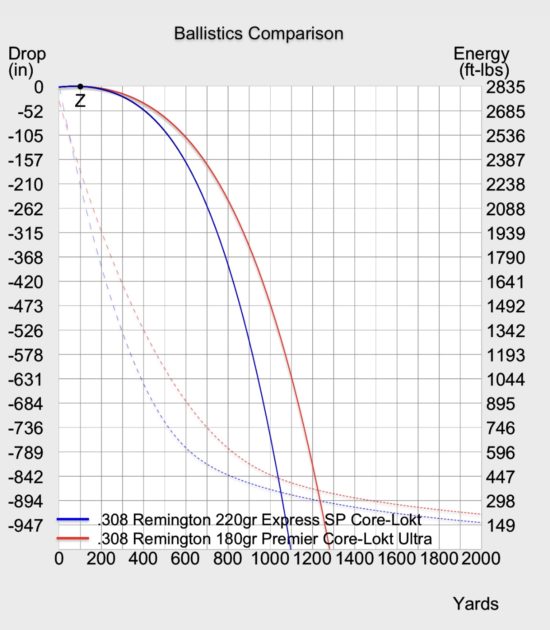
Note how the 30-06 Sprg (red) has less drop from 300 yards on out and more energy from 100 yards on out.
Because a comparison of different bullets showing the unique capabilites of each load is my favorite, here are the ballistics of the two loads compared:
308 Win vs 30-06 Sprg – Same Bullets
Now, for comparisons with the same bullets.
In the below graph we compare an affordable/economy load (but an GREAT performer for the price) the Federal Fusion 150 gr loads for each cartridge. Unfortunately, and sorry for the confusion, both of these same bullet graphs switch colors from above: the 30-06 is in blue and the 308 is in red.
As you can see, the 30-06 has an edge when using the same 150gr Fusion bullet, but VERY slightly.
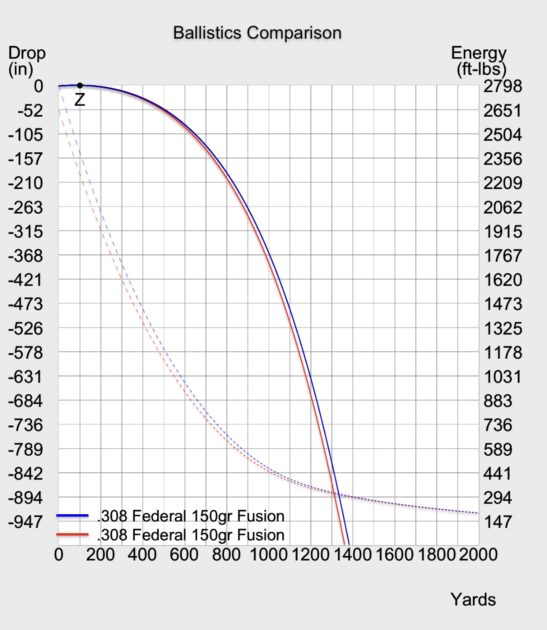
Now, we compare a premium bullet option, the Hornady 178gr ELD-X bullet.
As with the graph above, the 30-06 Sprg has a slight edge ove the 308 Win, but it is very slight.
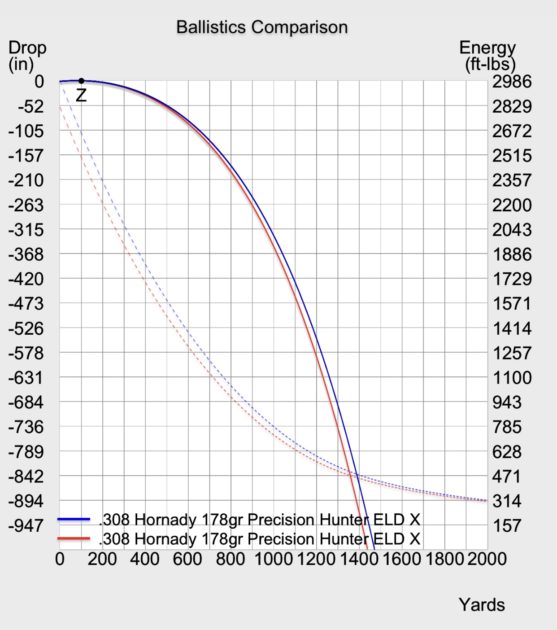
If You Have to Choose Between .30-06 or .308 – Our Take
First of all, I hate to cop out but I have to say it: if you’re format-agnostic, I don’t think you could go wrong with either of these cartridges. The external and terminal ballistic differences between the two are extremely subtle. Neither does a whole lot that the other one won’t, and either will serve you well. But we do have an opinion.
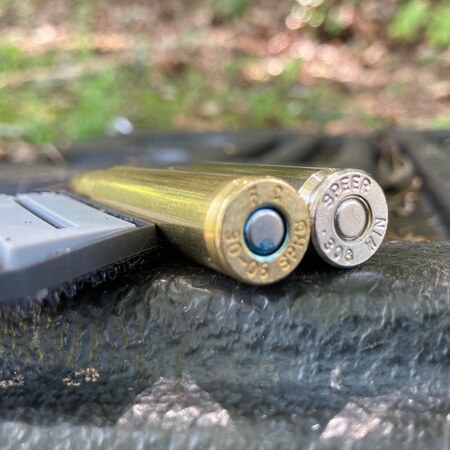
The major benefit of the 30-06 is the plentiful availability of ammunition during ammunition shortages. Its purely sporting nature sort of keeps it sort of off the radar. During this review it was one of the few chamberings (along with some of its offspring) that was well-represented on the shelves of my local gun shop. That alone may be a reason to keep a .30-06 in the back of the safe.
On the other hand, it’s really hard to find those really cheap, bulk cases of .30-06 ammo even in the best of times, while surplus 7.62×51 is usually easy to come by.
On an emotional level we see the appeal of the .30-06. Our dads hunted with them, and we admit still feeling an irrational pull to this old warhorse; toting a .30-ought-six into the woods on opening day of deer season just appeals to nostalgic sensibilities. But if we had to choose it would be an easy choice: the .30-06 wouldn’t get a second look.
The .308 is indisputably, hands-down our preference.
As a military cartridge the 7.62×51 NATO is still going strong and probably will be for decades to come. That means guns will continue to be developed in this chambering, and popularity will likely remain high.
Ammunition development will also continue for many more decades to come, and it’s hard (though not impossible) to imagine a day when .308 ammo isn’t cheap and readily available.
The shorter .308 also is also accommodated by a shorter action. This is kind of cool in bolt guns, because you can use a short action lug a slightly lighter rifle. It’s really cool in gas guns because you can build AR-10 and analogous semi-auto platforms around it. Platforms are plentiful, magazines are readily available…it’s the clear choice for those with future-proofing in mind.
The .30-06 is cool, and we like it. If you already own one, be proud of it. The differences mostly come down to logistical concerns between the rifles that chamber them and availability of ammunition.
Recent Posts
December 15, 2025
December 15, 2025
December 12, 2025
December 12, 2025

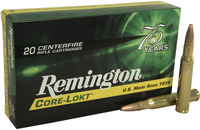


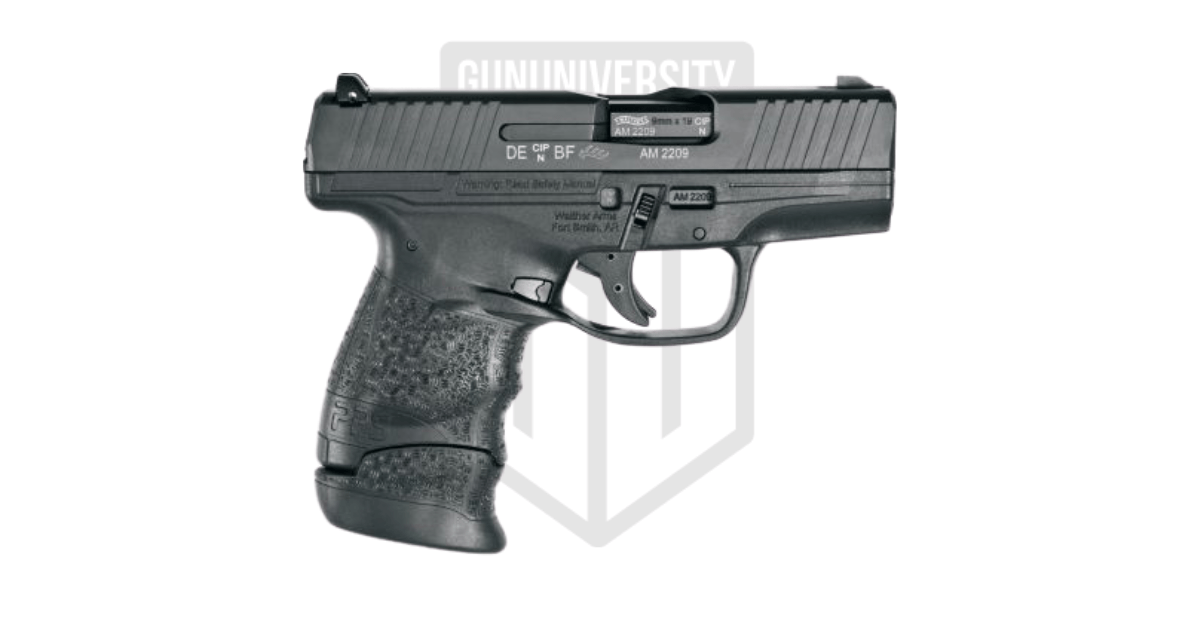
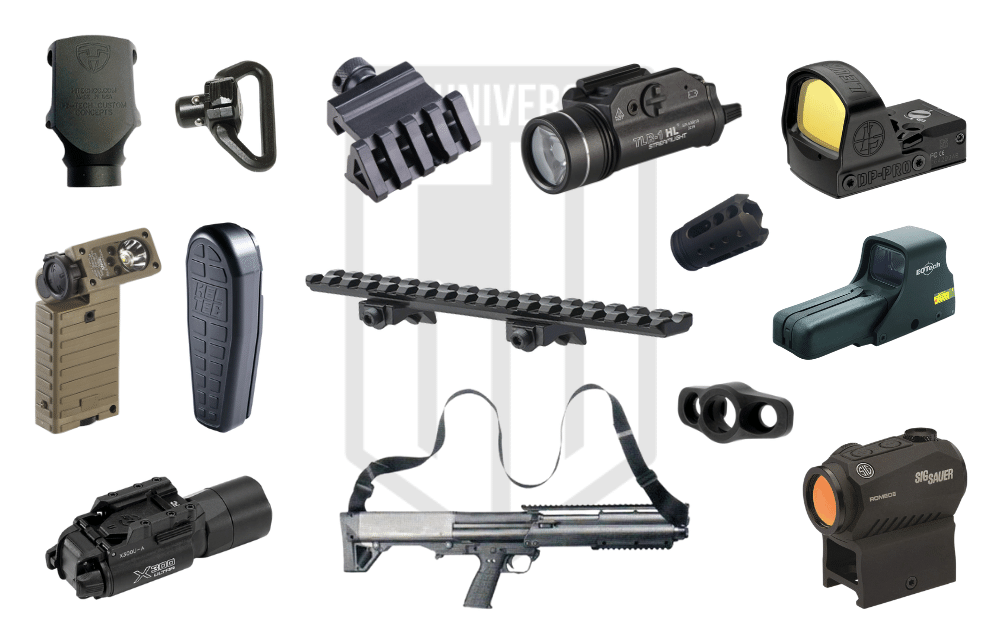
Great article! As previously mentioned, the legends in the graphs DO need edited. You labeled both lines the same caliber, rendering the data useless to the readers.
Thanks for the article! The legends on the graphs need some attention.
Agreed. I’ve seen a few minor editing issues on some of this site’s articles, but this one renders their graphs pretty useless without some intuition.
Nice article! My thoughts exactly, so of course I liked it. Picked AR-10 for my big rifle. May not have the long range accuracy of a bolt action, but liked the thought that I could squeeze off several rounds quickly,
Great article! Have rifles chambered in both cartridges. Just for target shooting, is it safe to shoot 7.62x51mm rounds out of a .308 chambered rifle? if so, will it have any effect on barrel life?
Great article, I agree that the.308 is #1 in the door. As always, my#2 is the 30-06. Thanks for the write up!
Nice write up. I thought the article was very informative and interesting.